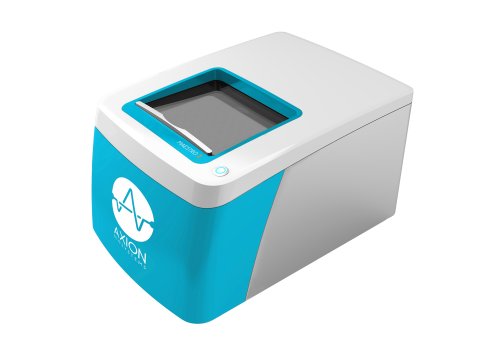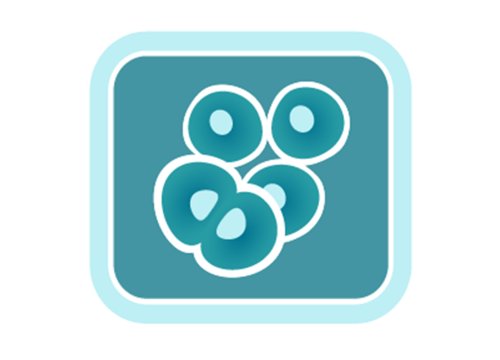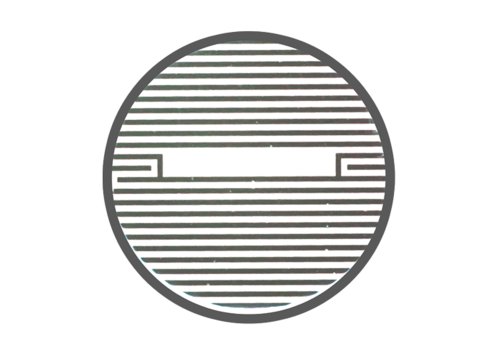 Sarwish Rafiq, PhD
Sarwish Rafiq, PhD
Emory School of Medicine
Drug Target Review, 2022
CAR T cells have shown incredible promise in the clinic, but there is still room for advancement. One avenue for improvement is through modification of the CAR design. However, given the number of exchangeable domains, testing all variations can present a hurdle. In this article, Dr Sarwish Rafiq, Assistant Professor in the Department of Hematology and Medical Oncology at Emory University School of Medicine, explores why robust and real-time methods for assessing immune-cell potency, such as impedance monitoring with assays, can provide researchers with a pathway to develop more effective CAR T cells.
In 2017, the US Food and Drug Administration (FDA) approved the first chimeric antigen receptor (CAR) T-cell therapy, forever changing the field of oncology. Since then, the FDA has approved five more CAR T-cell therapies for a range of blood cancers. Today, scientists continue to learn about the lifesaving potential of CAR T cells and seek new solutions to the unique development challenges associated with bringing this generation of therapies to the clinic.
CAR T-cell therapies have shown unprecedented therapeutic efficacy. In several studies, people with B-cell acute lymphoblastic leukaemia have shown complete remission rates between 70 and 94 percent. Unlike traditional chemotherapy and radiation treatments with indiscriminate cytotoxic effects, CAR T-cell therapy redirects the human immune system to eliminate cancer cells in a highly targeted – and often highly effective – manner.
To generate CAR T cells, scientists genetically engineer T cells to express CARs – synthetic cell surface receptors that target tumour cells. A patient’s T cells are removed, genetically modified, expanded and reinfused into the patient; the modified cells then seek out tumour cells and destroy them. Most CARs today target CD19, a protein that is highly expressed on B cells, making the CARs highly attuned to cancer cells in people with B-cell leukaemias and lymphomas. While CD19-directed CAR T cells have shown incredible success in the clinic, there is a critical need to develop safer cell-based treatments that are effective against a wide range of tumour types.
Room for improvement in CAR T-cell safety and efficacy
In my lab, we study novel engineered cellular immunotherapies, including CAR T-cell therapies. We aim to improve the therapeutic efficacy of CAR T-cell therapies in vivo so that more patients can benefit from these treatments. In our work, we have identified several barriers that limit the use and adoption of CAR T cells.
Severe adverse effects
CAR T cells are so effective at activating the immune system that they run the risk of pushing it into overdrive to the detriment of the patient. For instance, one common side effect of CAR T-cell treatment is cytokine release syndrome (CRS). Manifesting within one to 14 days of treatment, this can cause symptoms ranging from high-grade fevers to life-threatening organ dysfunction. CAR T-cell therapy can also cause neurologic toxicity. While these toxicities are now mostly clinically manageable, scientists must find a way to reduce their incidence. Consequently, several research efforts are underway to improve the safety of CAR T cells.
Reaching, infiltrating and attacking solid tumours
Scientists hope to expand CAR T cells’ reach to solid tumour types, but these malignancies present several formidable challenges. First, unlike several blood cancers that universally express CD19, solid tumours typically do not uniformly express unique antigens. Furthermore, the antigens found on solid tumours are often present on healthy tissues at low levels, making it difficult to identify a target antigen with few off-target effects.
One method for limiting off-target toxicity involves introducing suicide genes into the cells. These genes trigger CAR T-cell death when exposed to a drug or antibody, creating a ‘kill switch’ in case the therapy causes adverse effects. However, this kill switch capability does not solve the problem of developing a CAR T cell that successfully infiltrates a solid tumour.
Scientists hope to expand CAR T cells’ reach to solid tumour types, but these malignancies present several formidable challenges.
It is challenging to make CAR T cells reach solid tumours for several reasons. For one, CAR T cell entry into tumors can be blocked by several chemical and physical barriers, including aberrant chemical gradients and abnormal vasculature. Scientists are working on several methods to help CAR T cells reach their destination, including targeting various tumour‑associated markers and localising treatments more specifically to the site of the tumour.
Once CAR T cells do reach a tumour, the cells must survive long enough to perform their intended function. Unfortunately, the tumour microenvironment makes this difficult in several ways. It tends to lack the oxygen and nutrients a CAR T cell needs to survive and activate. This setting also contains molecules that directly inhibit T-cell activity. Finally, the conditions are often acidic, making the cells susceptible to oxidative stress. To combat this 2 3 3/5 damaging environment, scientists are engineering CAR T cells to express proteins that make the tumour microenvironment more tolerable. For example, some interventions make the cells’ mitochondria generate energy more efficiently or reduce reactive oxygen species levels.
Antigen heterogeneity allows tumours to elude treatments
Just as solid tumours do not express tumour-specific antigens, they also do not express the same antigens on each cell. This heterogeneity creates another barrier to treatment success. Even tumours that show low levels of heterogeneity may exhibit antigen loss or antigen escape, whereby the antigen disappears and makes portions of the tumour invisible to CAR T cells.
The solution to this problem may lie in combination therapies. Dual or tandem CARs target two antigens simultaneously, making it more difficult for subsets of tumour cells to escape.
Persisting long enough to treat cancer effectively
In many cases, CAR T-cell treatments suffer from poor persistence in the blood. Adequate persistence is crucial to a treatment’s success; if CAR T cells do not survive long enough, the therapy will not work. Furthermore, as commercially available CAR T-cell products are all manufactured from the patient’s own immune cells, it is difficult to predict how long each batch will persist in a patient’s body.
Many scientists looking to enhance CAR T-cell persistence are experimenting with different pre‑treatment regimens to increase yields. Furthermore, changes to CAR structure and design can improve persistence. Scientists are also testing a variety of other interventions to boost CAR T-cell survival and reduce inhibitory signals to improve treatment outcomes.
Addressing these challenges
To ensure their effectiveness in the clinic, scientists need to assess the function and efficacy of CAR T cells in vitro before being used in humans. An effective way to accomplish this is to run a cytotoxicity assay. More specifically, my group has found that a bioelectronic assay that quantifies cell-mediated killing is the ideal way to determine in vitro cytotoxicity.
Many assays only assess cell viability and cell death at predetermined time points. A scientist must choose when to measure the cytolysis of their cells in advance but predicting ideal timepoints can be a challenge. Experiments run the risk of missing critical events such as the point of peak killing or the point of T-cell exhaustion.
Bioelectronic assays, on the other hand, allow researchers to measure cytolysis continuously. This technique uses electrodes embedded in the bottom of a multi-well plate to assess the presence and behaviour of cells. The assay measures impedance, which increases with cell attachment and proliferation and decreases with cell death. Since this quantitative method is non-invasive and requires no labels or dyes, scientists can monitor cell death in real-time for hours or days without disturbing the biology.
Monitoring the potency of cell therapies using bioelectronic assays
The data this assay collects allows us to measure variables that an endpoint cytotoxicity or cell viability assay cannot offer. For example, it can measure the rate of cell death, which can indicate potency. This variable is a critical endpoint for researchers interested in studying how various internal and external conditions affect CAR T-cell behaviour.
An important variable in the development of CAR T-cell therapy is the source of the T cells. CAR T-cell treatments approved for use today are autologous, meaning the T cells are taken from a patient’s bloodstream before being modified. Patients, in most cases, will have already undergone some form of therapy that affected their T-cell function. Consequently, it is impossible to guarantee the consistency of a CAR T-cell product from donor to donor; therefore, it is essential to assess the potency and killing rate of each CAR T-cell batch.
One advantage of using a multi-well plate is the ability to run multiple experiments simultaneously. For instance, researchers can screen CAR T cells with different antigen targets to identify the target with the best tumour-killing potency. Other wells can contain non-cancerous cells to simultaneously assess the same CAR T cells’ toxicity and potential offtarget effects. We can easily test many different CAR constructs. Researchers can also compare potency between methods for engineering and expansion or the wells could contain inhibitory ligands, allowing scientists to see how CAR T cells fare against the suppressive environment of a tumour. Altogether, a bioelectronic assay can interrogate many parameters that could influence CAR T-cell potency, safety and effectiveness.
Reaching the next step
CAR T cells are living treatments that operate by a complex set of rules. It can be hard to predict how a CAR T cell will function after it has been removed, engineered and put back in the body. While these treatments have shown incredible success in the clinic, there is still much to learn about them to improve their safety and reliability. Measuring the kinetics of cell growth, viability and death in real‑time using a bioelectronic assay provides scientists with a promising platform for understanding how to build the optimal CAR T cell. Overall, this research will give oncologists access to more highly targeted, truly life‑saving treatments for their patients.
References
1. Wang Z, Wu Z, Liu Y, Han W. New Development in CAR-T cell therapy. J Hematol Oncol. 2017. Feb;10:53. https://www.ncbi.nlm.nih.gov/pmc/articles/PMC5320663/ 5/5
2. Frey N, Porter D. Cytokine Release Syndrome with Chimeric Antigen Receptor T Cell Therapy. Biol Blood Marrow Transplant. 2019. Apr;25:4. https://www.astctjournal.org/article/S1083-8791(18)31579-9/pdf
3. Santomasso B, Bachier C, Westin J, et al. The Other Side of CAR T-Cell Therapy: Cytokine Release Syndrome, Neurologic Toxicity, and Financial Burden. ASCO. 2019 :39, 433-444. https://ascopubs.org/doi/full/10.1200/EDBK_238691
4. Martinez M, Moon E. CAR T Cells for Solid Tumors: New Strategies for Finding, Infiltrating, and Surviving in the Tumor Microenvironment. Front Immunol. 2019. Feb;10:128. https://pubmed.ncbi.nlm.nih.gov/30804938/
About the author
Dr Sarwish Rafiq is Assistant Professor in the Department of Hematology and Medical Oncology at Emory University School of Medicine. The overall goal of her research is to use the mechanistic insight of immune effector cell function and interaction with cancer cells in the tumour microenvironment to inform the development and translation of novel engineered cellular immunotherapies.


